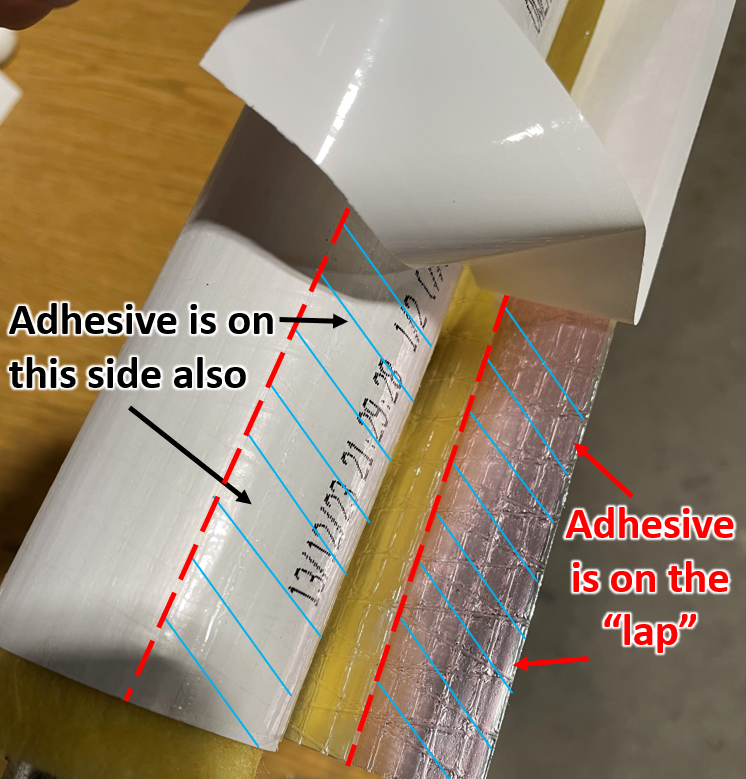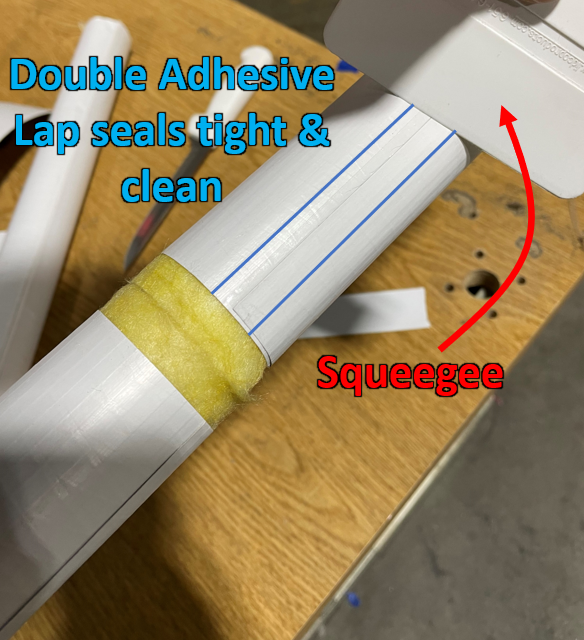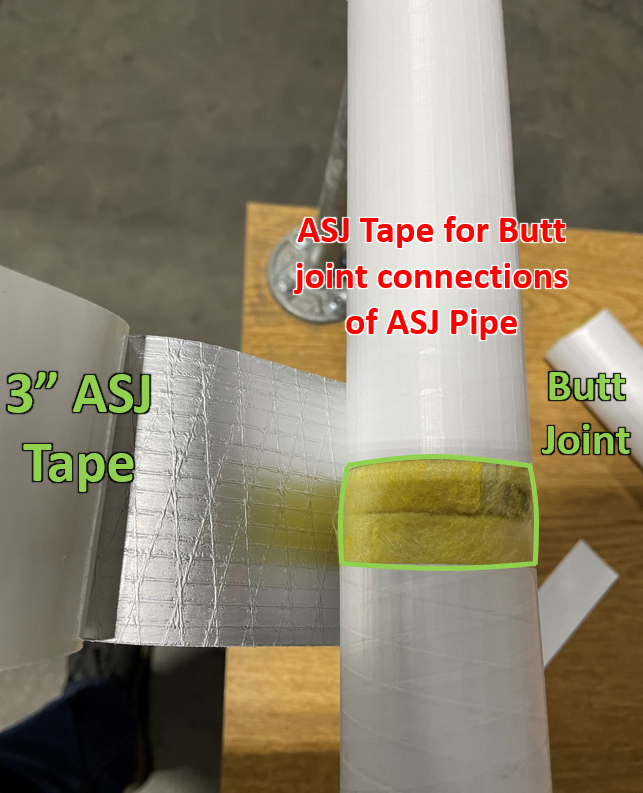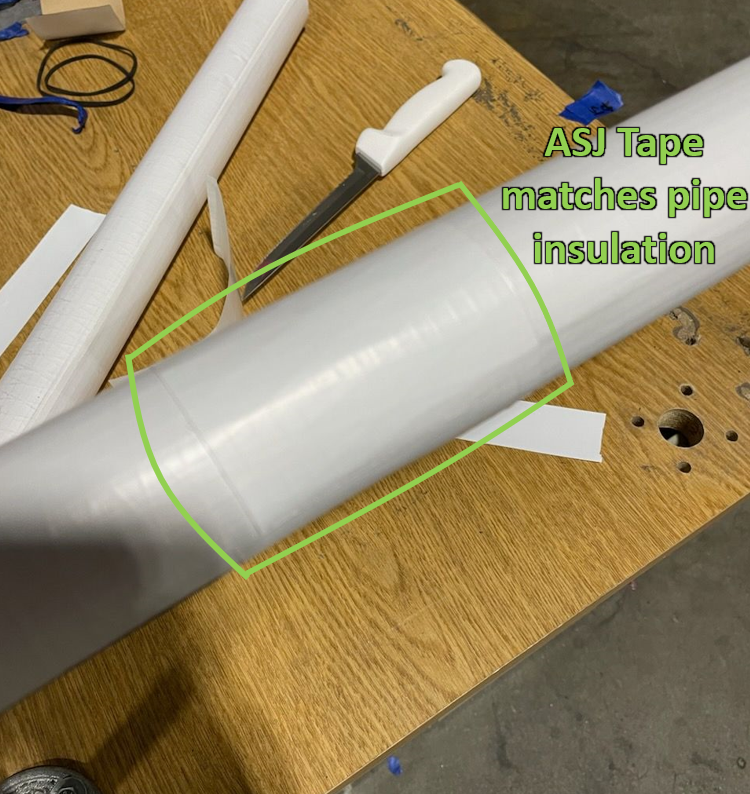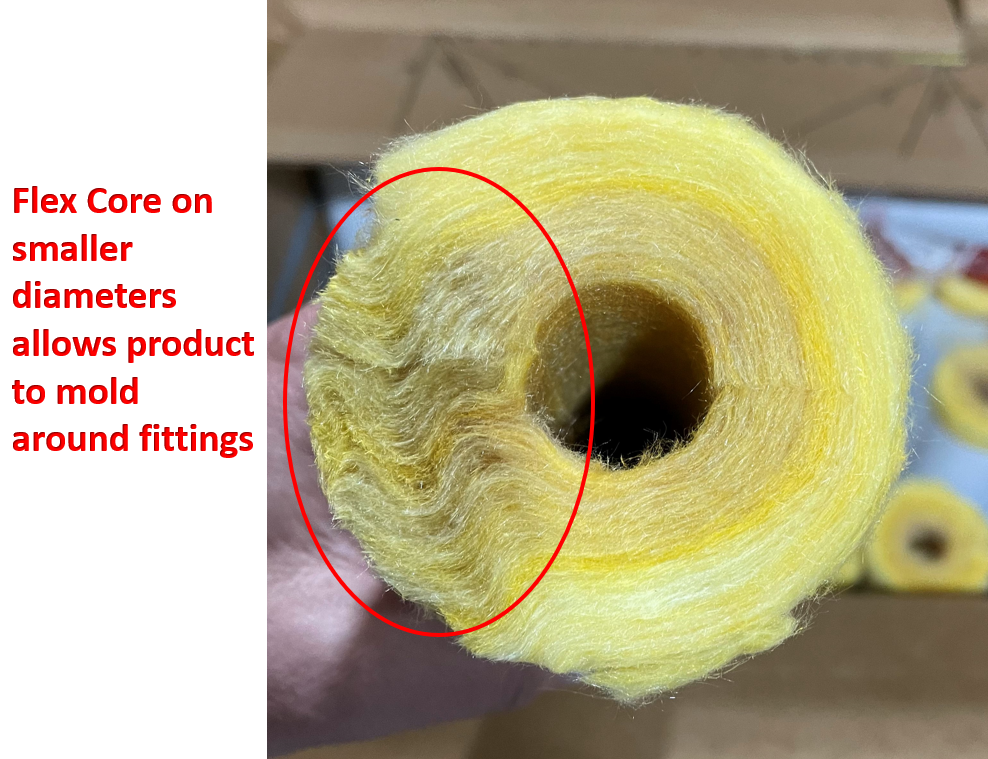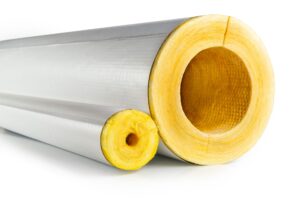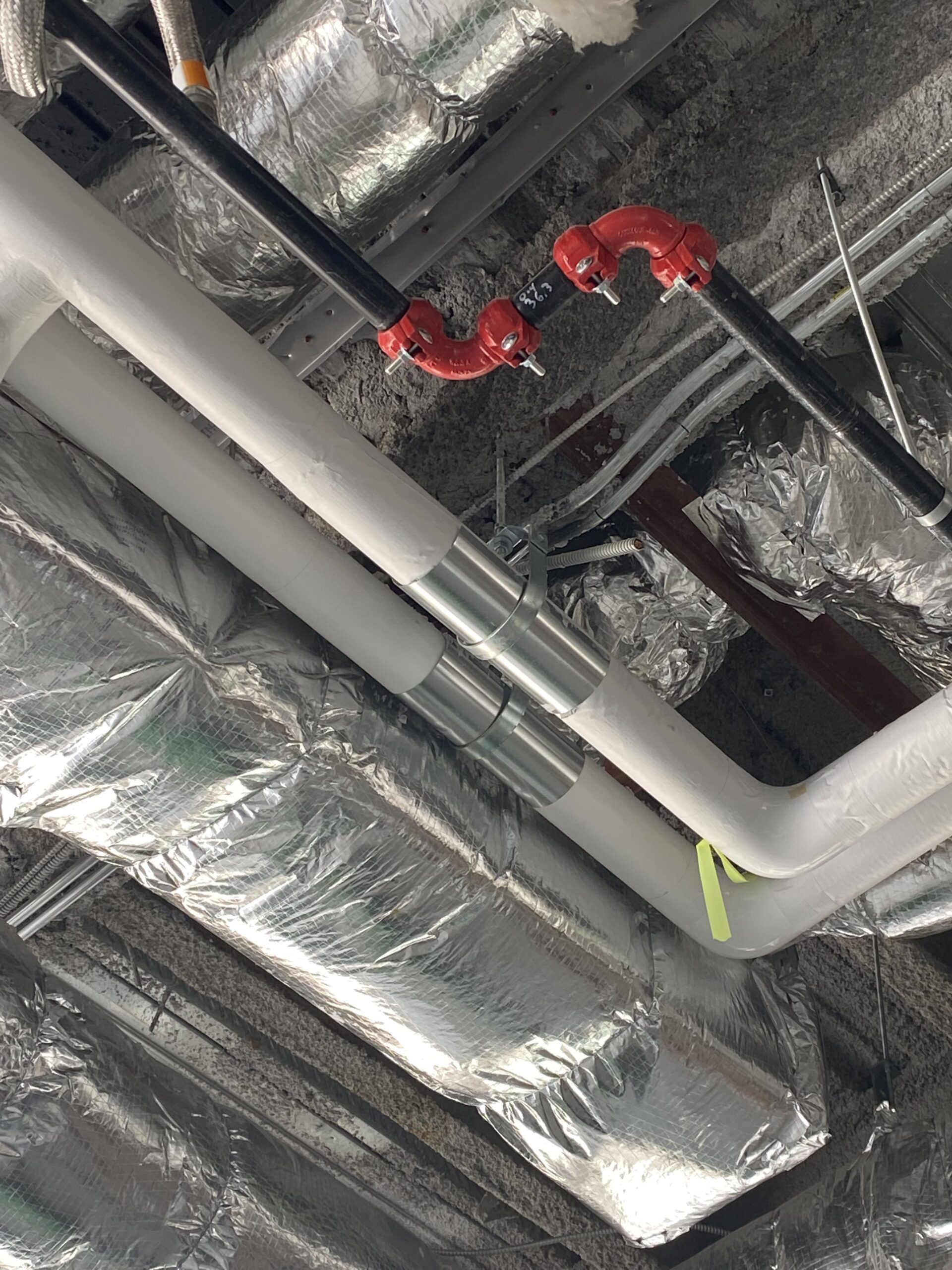
Fiberglass Pipe Insulation insulates copper and black iron piping that helps carry domestic hot and cold water, roof drains, PVC piping in plenums, Polypropylene piping, Chill water piping, etc. The pipe insulation comes in 3-foot sticks, with insulation ranging from 1/2″ to 5″ wall thicknesses. These sticks of insulation are installed over pipes and butted together with another 3-foot stick which are called butt joints. In addition, each specific butt joint of insulation pipe cover needs to be sealed with 3M’s ASJ+ tape and/or the butt strips that are provided within each Owens Corning pipe insulation box. When insulated and installed properly, the system should maintain specific temperature ranges that are safe to meet a customer’s fitness for use. Overall, the goal is to prevent “Corrosion Under Insulation (CUI)” while insulating with the correct materials and thicknesses to provide maximum energy efficiency to the building owner.
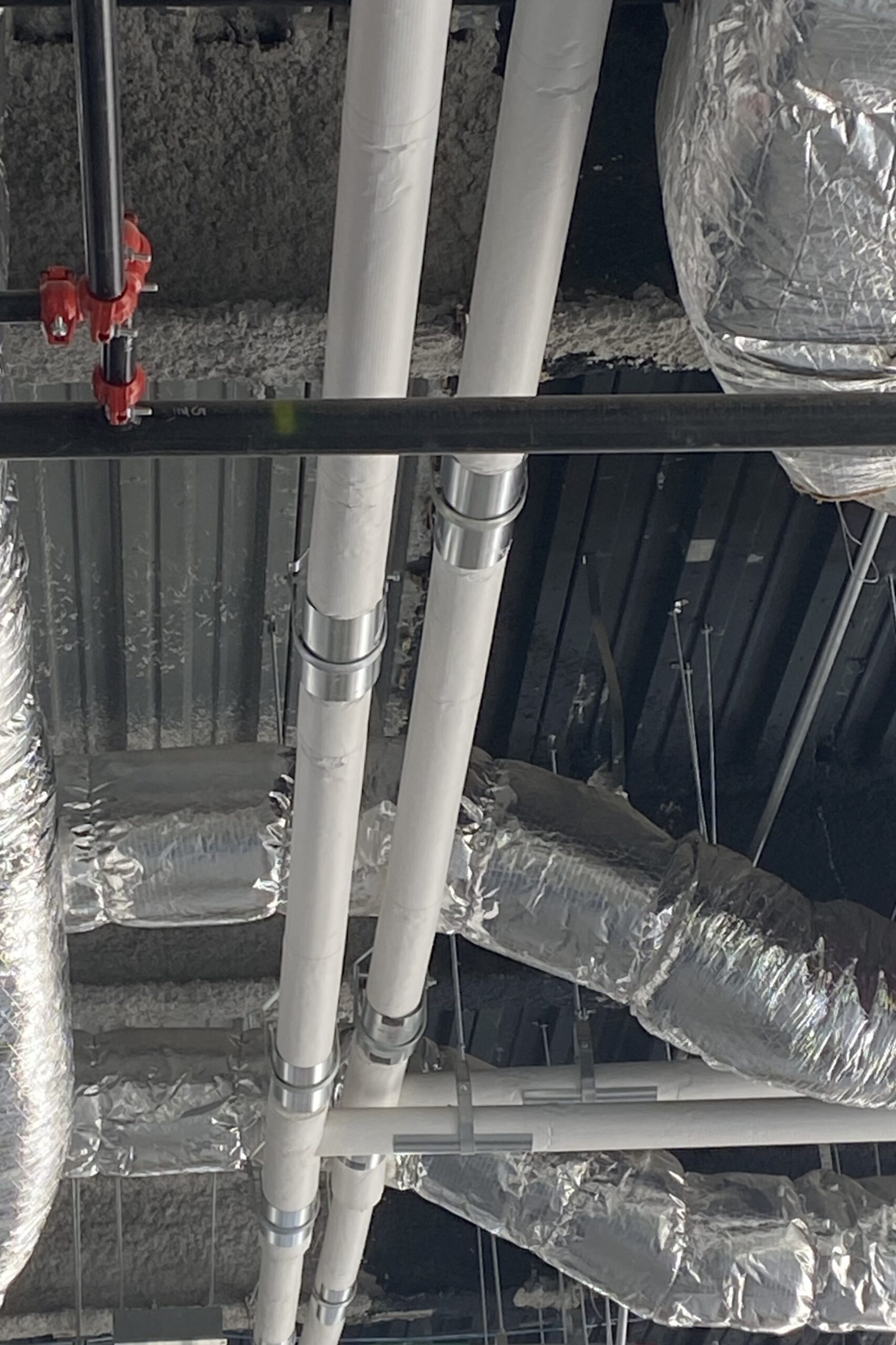
Preventing (CUI): “Corrosion Under Insulation)”
Whenever there’s piping that carries a liquid or liquid gas, there’s a risk of condensation building up between the Piping and the Insulation if the Insulation is compromised in one way or another, whether it’s damaged during installation or maintenance or by exposure to the elements. The main factor in a Mechanical Systems longevity will be the Insulation’s ability to prevent “CUI”. Moisture is the enemy as it can seriously disrupt a system running efficiently. If the integrity of the overall vapor barrier created by the jacketing of the fiberglass pipe insulation is penetrated, corrosion could occur to the actual piping, and the efficiency of the system could suffer in totality.
Not all applications are equal in scope and difficulty, but when it comes to Mechanical Piping, nothing is more challenging than adequately and accurately insulating “Chilled Water Systems”. The different insulation manufacturers devote more time and attention to Chilled water specs than anything else. North American Insulation Manufacturers Association (NAIMA) even has a separate “Guide to Insulating Chilled Water Piping Systems with Mineral Fiber Pipe Insulation” specifically detailing instructions on proper installation guidelines and techniques.
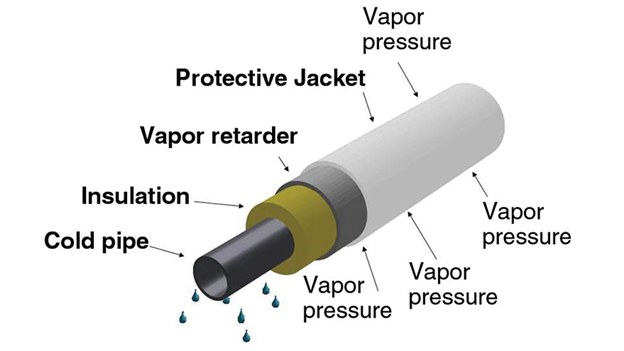
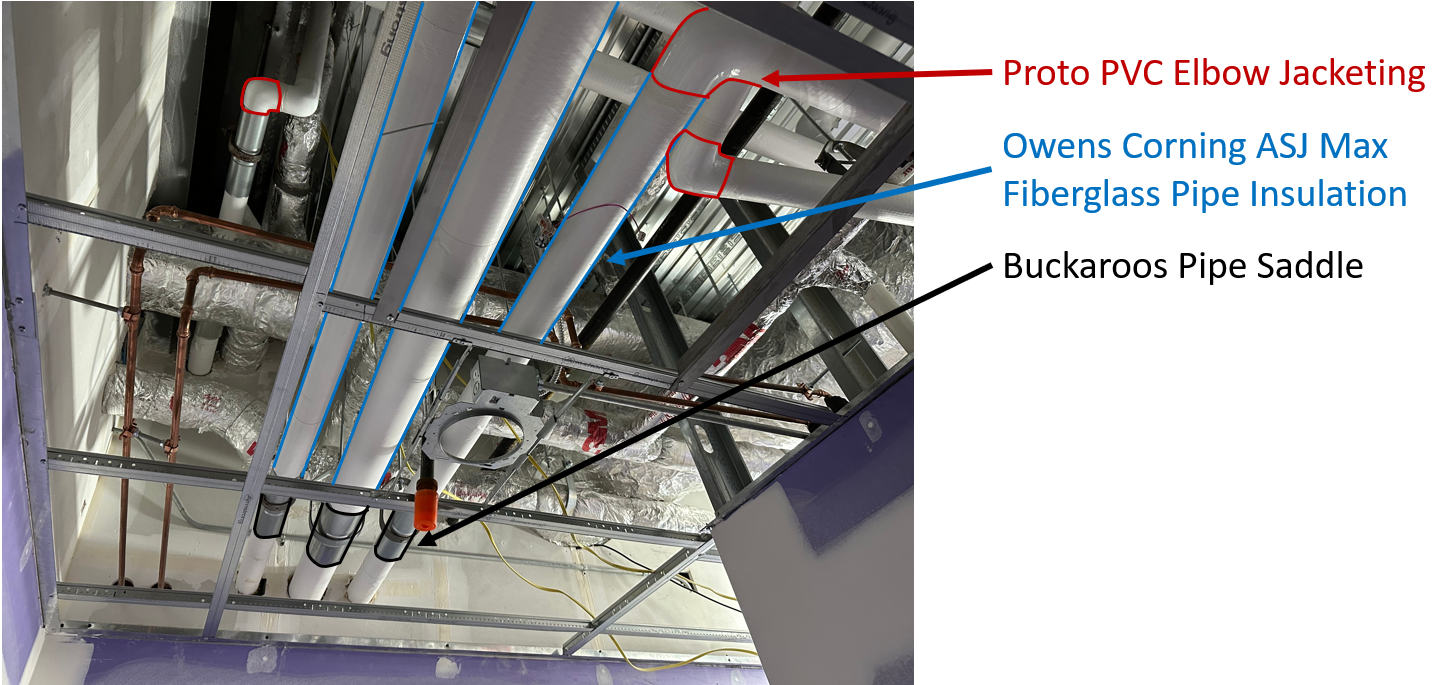
What are Chilled Water Systems and Why is it on of the Toughest systems to Insulate?
Chilled Water Systems are often used in commercial applications including arenas, stadiums, hospitals, factories, office buildings, and other commercial buildings of a larger size. In this type of mechanical system, water, in conjunction with a central cooling tower plus a condenser and a compressor, is made cold and pumped thru pipes as the cooling element instead of air, thereby cooling throughout the building.
For example, at an outdoor baseball stadium, carrying very cold water thru pipes as a cooling element inherently lends itself to potential problems such as moisture build-up and CUI, especially considering that Fiberglass Pipe Insulation is not always being installed in a completely weathered-in building/space. Rather, the insulator is installing pipe insulation in a nearly outdoor space with humidity, rain, sun, sleet, and snow at times. While it’s not open to the elements, it is in the elements and thus can pose a major challenge when preventing Chilled Water Pipes that are carrying very cold water from sweating and creating CUI.
Humidity Matters and It Varies per Region:
In the Southeast US, the summers are defined by the amount of “humidity” in the air. Typically, when restaurants have the A/C cranking during a brutally hot and humid July evening, you can sometimes see and feel water dripping off the ductwork. That’s derived from cool air moving thru an under-insulated duct in a high humidity space. Now imagine the potential for condensation when you’re talking about very cold water moving thru black iron pipes in a non-conditioned space, especially one with high humidity. Sweating pipes would create such corrosion and thus effect an Insulation’s ability to insulate and protect the piping. With engineers from all over the globe specifying projects in the Southeast, they might underestimate the humidity and environment, potentially resulting in under-specifying the proper insulation thicknesses which could cause serious long-term problems to a mechanical system.
A Chilled Water System in an atmosphere like Atlanta for example, might require 2″ to 2-1/2″ thick wall thickness of fiberglass pipe insulation, yet the spec might be asking for only 1-1/2” thickness, which could pose a problem for the building owner. In this example, an insulation contractor may be in a position to quote what’s specified versus what he determines to be the best option for the application. Again, during the bid period, a contractor will bid what is typically spec’d as they may price themselves out of the job if they quote what is truly needed/required.
Thickness Matters:
Owens Corning’s Fiberglass Pipe Insulation comes standard in 1/2″ thru 3″ wall thicknesses. The thicker the insulation, the better the insulating properties.
Most steam and hot-water pipe applications require the proper fiberglass pipe insulation wall thicknesses to help meet “Personnel Protection” specifications for mechanical systems. For example, 5″ fiberglass insulation wall thickness is considered a “Made To Order” thickness and can only be achieved by “Nesting” two smaller thicknesses, layering a smaller diameter section inside a larger diameter section (i.e. 2 inch inside 3 inch to achieve 5 inch). The jacket is removed from the inner layer of insulation so that there is No Vapor Barrier in between the two separate thicknesses This technique is commonly used to help reach specific insulation wall thicknesses since most distributors only stock up to 3″ wall thicknesses.
Even though the insulation may show 2” (which is 2-3/8” ID) x 2” wall, the wall is increased or slightly decreased so that the OD of the insulation matches up to the next OD Pipe size.
Another benefit of nesting is that the insulator is able to stagger the joints to achieve better thermal performance, thereby avoiding the loss of density that would otherwise result on the cut side and joints of the insulation.
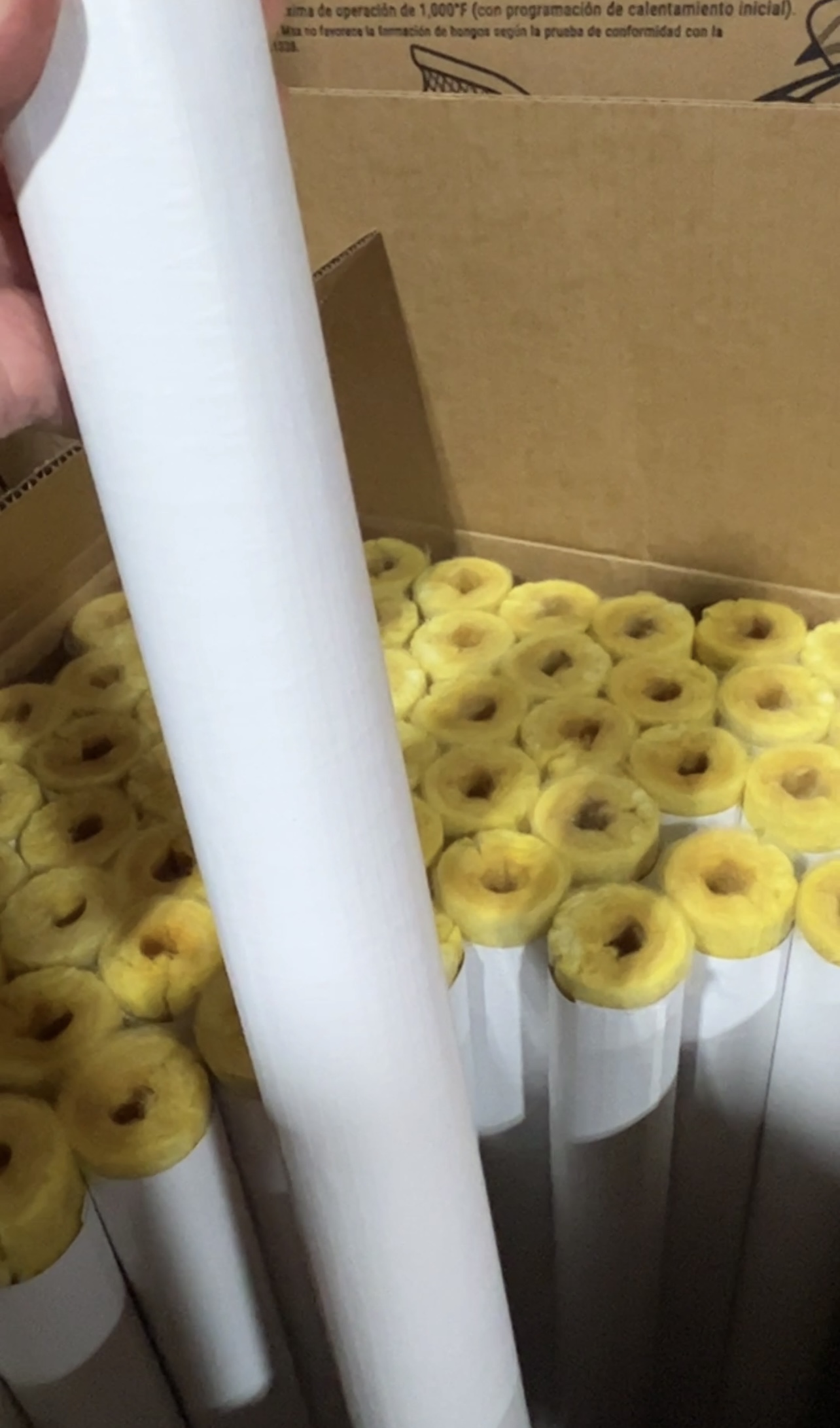
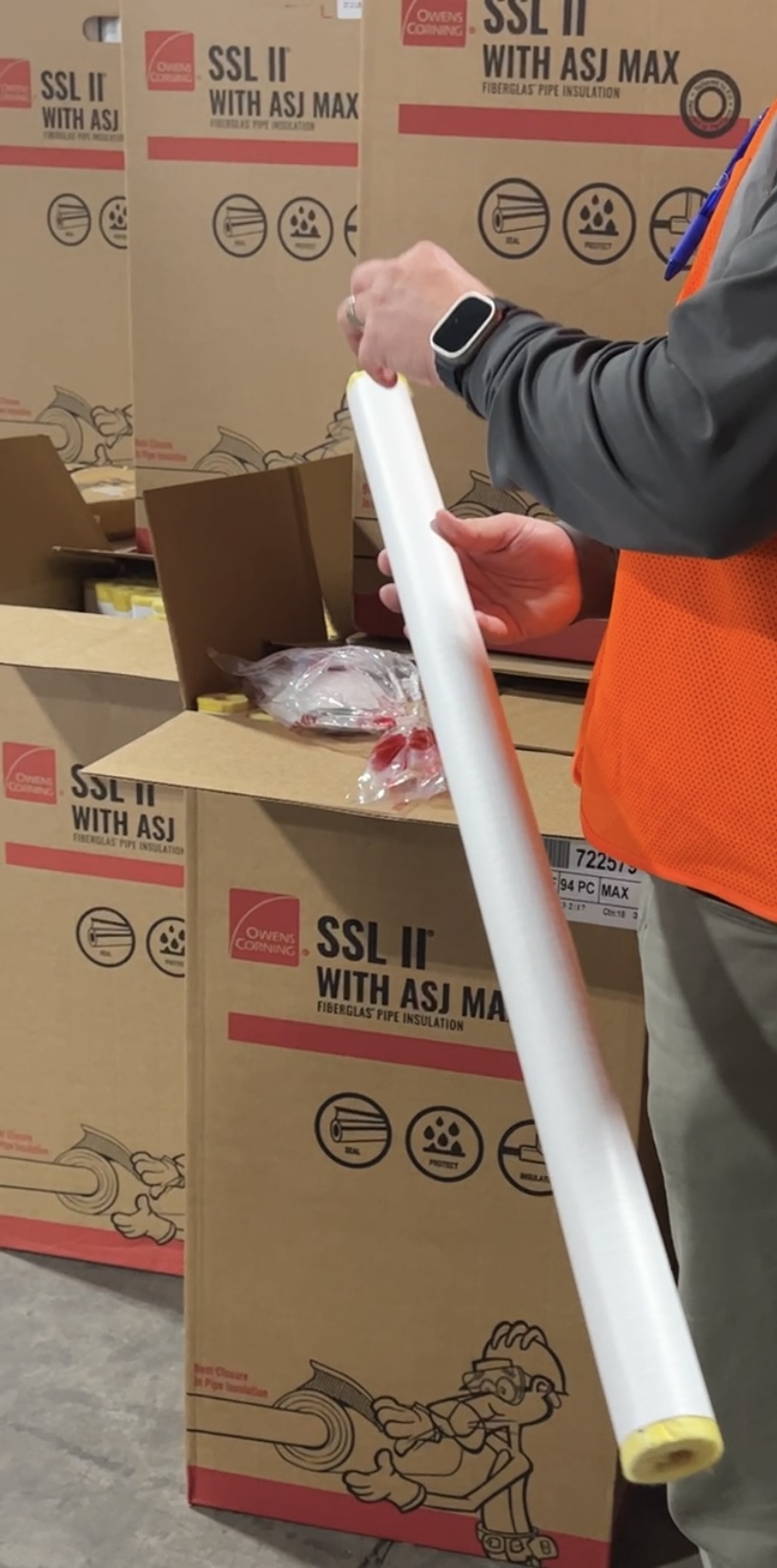
Paper vs Poly Jacketing:
Just as Fiberglass helps protects the piping, the jacket protects the fiberglass along with the systems vapor barrier. There are two types of jacketing used in the Fiberglass Pipe Insulation market: Uncoated and Coated or, more specifically, ASJ Paper and ASJ Jacket. The ASJ Paper is just an uncoated paper jacket and that’s what is often used as Fiberglass Pipe Insulation. From inside to outside, it’s a foil layer, then scrim, then paper. When it’s a Poly product, that ASJ paper has another layer that makes it have a higher sheen, and more resistant to dirt and moisture and staining.
The ASJ Poly is the Paper product with a polymer layer added to the facing. It’s an additional step, but it’s a BIG additional step when it comes to the value received by the end user because it takes the vapor barrier from a 0.02 perm rating with ASJ to a 0.01 perm rating with ASJ Poly. So, technically, it’s a 50% better perm rating. By getting to a 0.01 perm rating, it becomes classified as an impermeable vapor barrier versus the 0.02 per rating being semi-impermeable paper jacket that is an inferior system in comparison.
Despite the Poly Jacket being available at all manufacturers, a high percentage of Fiberglass Pipe Insulation is sold as uncoated paper jacket with FSK scrim due to cost and familiarity.
But when Paper jacket gets wet, it becomes brittle. And once it gets brittle, you might as well count on it becoming a problem for the system in the near future. This should be a major concern for the industry and building owners, no matter the region, no matter the humidity, no matter the environment. In most large cities in America, most skyscrapers and commercial buildings aren’t weathered-in and are open to the environment. Owens Corning’s ASJ Max Pipe Insulation has a 0.01 perm rated jacket that can take intermittent moisture with an SSL2 double adhesive lap making it the best jacketing system in the market. Moisture and CUI will always be an issue as it has been for decades within mechanical systems. Intermittent Moisture can be a silent killer. Having a product with a poly jacket that can take intermittent moisture provides piece of mind on any project to the engineer, contractor, and building owner.
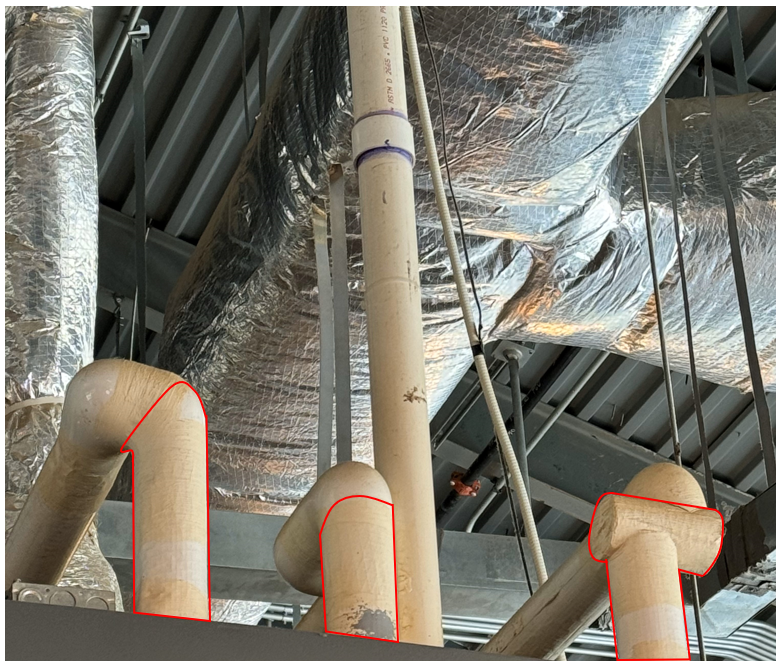
Which brand is the Best Fiberglass Pipe Insulation in the Market:
Most Fiberglass Pipe Insulation has a plain uncoated paper jacket. Because there are many hands coming in contact with these 3 ft pieces, the downside to such a jacket is a higher risk of popping a hole into it with a finger or work tool or spilling a dark liquid on it that absorbs into the paper.
The first thing that stands out on the Owens Corning SSL II ASJ Max is the slick and strong jacket and it’s this jacket that sets Owens Corning apart from the pack when it comes to Fiberglass Pipe Insulation. When other brands get wet from a dark liquid they have spots that appear and don’t go away; when the ASJ Max gets wet simply wipe down the jacket and it appears as if it never got wet.
But resistance to dark water spots and other stains isn’t the main reason contractors prefer Owens Corning: it’s the double adhesive, the only product out there with such. The stick is not only on the Lap with the strippable film; it’s also on the portion of the pipe that mates with the lap.
The benefit of “adhesive on adhesive” is that after the lap is pulled and squeegeed together it’s not coming apart.
